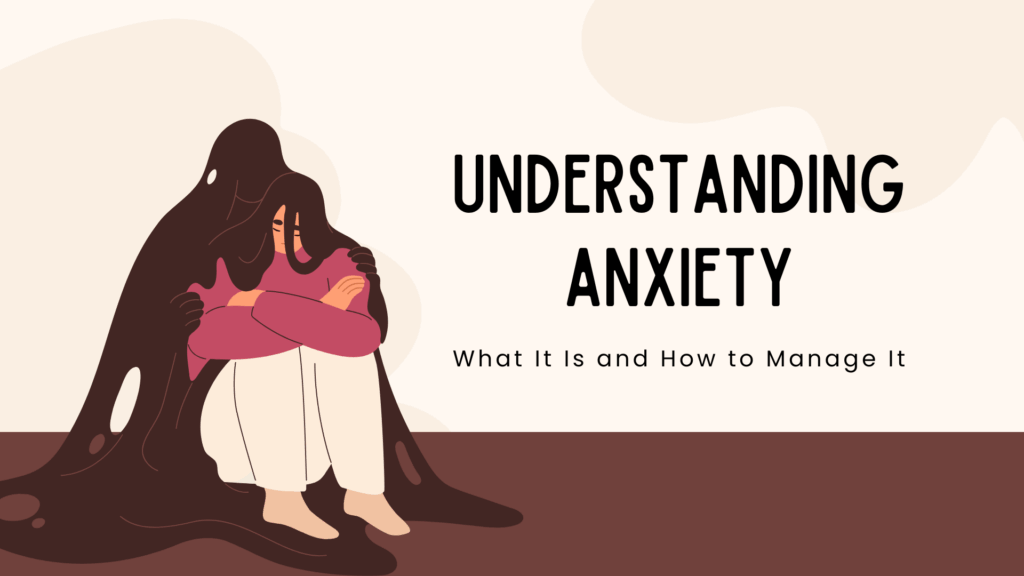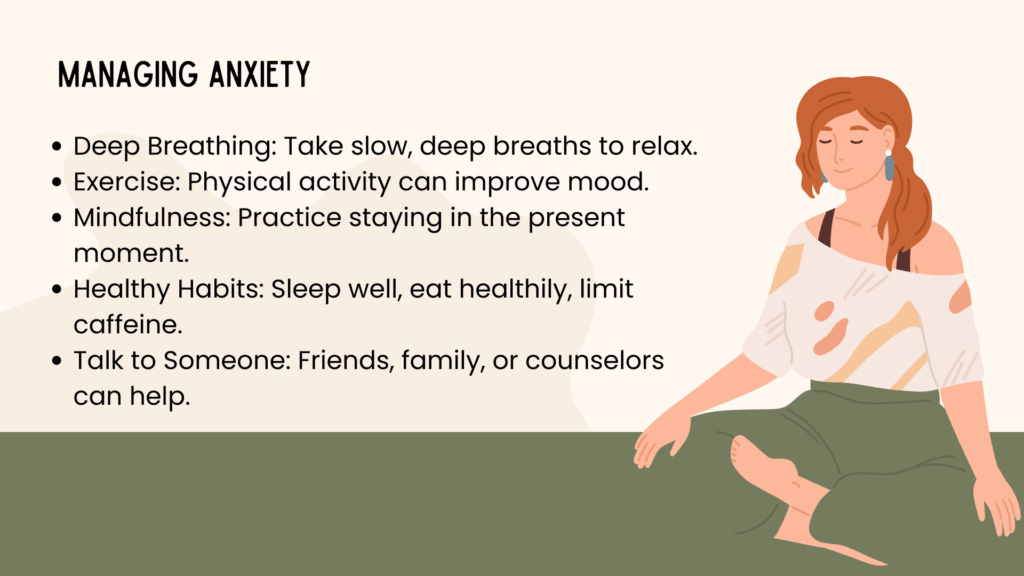What is Anxiety Disorder?
Anxiety disorders are the most common mental health condition in the United States. This umbrella term covers a family of related conditions with their quirks and defining traits.
At its core, anxiety tries to protect you. It’s a survival mechanism—until it starts messing with your life. Faulty thinking patterns, called cognitive distortions, fuel a cycle that can trap you in a loop with no clear way out.
These distortions lead to avoidant behaviors, which only perpetuate the cycle. No amount of reassurance from yourself or others tells you it’ll be okay. Anxiety levels increase, making you overestimate how bad things are.
An anxiety disorder can develop for many reasons—genetics, brain chemistry, life events, you name it. If anxiety keeps you from doing everyday things like working, visiting friends, or even going to the grocery store, it’s probably running the show.
A Closer Look at the Numbers
- Over 40 million adults face an anxiety disorder each year.
- About 19.1% of U.S. adults had some form of anxiety disorder in the past year., followed by major depressive episodes at 8.3%.
- Around 31.1% experience an anxiety disorder at some point in their lives.
- Women report anxiety disorders more than men—23.4% compared to 14.3%.
- Nearly 23% of adults with anxiety have severe impairment, while about a third experience moderate impairment.
- Roughly 25.1% of teens aged 13 to 18 deal with anxiety disorders.
- Almost 24% of adolescents experienced anxiety in the past year.
- An estimated 31.9% of teens have had an anxiety disorder, with rates higher in females (38%) than males (26.1%).
- Up to 80% of young people don’t get the mental health care they need for anxiety.
Symptoms and Signs of an Anxiety Disorder
Symptoms of anxiety show up differently for everyone. Watch for these common signs:
- Panic, excessive worry, and uneasiness.
- Insomnia or sleeping too much.
- Restlessness—tapping, fidgeting, or not being able to sit still.
- Cold, sweaty, numb, or tingling hands or feet.
- Shortness of breath, racing heartbeat.
- Nausea and dizziness.
- Tense muscles, clenched jaw, grinding teeth.
- Obsessive thinking about problems, unable to stop.
- Difficulty concentrating or fully listening.
- Dry mouth.
- Avoiding feared objects or places intensely.

Subtypes of Anxiety Disorders
Anxiety disorders come in many forms. Some make you worry about everything for a long time, while others zero in on specific things. Still, these mental health disorders share lots of symptoms.
Generalized anxiety disorder (GAD) means ongoing unease or dread. It’s more than just worrying about something stressful—it’s constant anxiety that can last months or years.
Panic disorder brings frequent, unexpected panic attacks. During these, everything feels like a disaster, even when there’s no real danger. People with panic disorder often worry about when the next attack will hit. These attacks might happen several times a day or just a few times a year.
Phobias involve intense fear of particular objects or situations. People with phobias avoid what scares them, which can seriously limit their lives.
Obsessive-compulsive disorder (OCD) is a chronic condition where people get stuck in uncontrollable thoughts (“obsessions”) and repetitive behaviors (“compulsions”).
- Examples of obsessions include fears of germs, needing things to be symmetrical, or dreadful thoughts about harming others.
- Compulsions might be counting items, washing hands repeatedly, constantly checking locks or stoves, strict cleaning routines, or avoiding triggers like doorknobs.
Social anxiety disorder (SAD) means being terrified of being watched or judged. This fear can be so intense that it feels uncontrollable. It can make it impossible to work, go to school, or even pick up the phone. People with SAD often struggle with eye contact, speaking up, or meeting new people.
Post-traumatic stress disorder (PTSD) develops after a traumatic event. It’s normal to feel scared after trauma, but with this type of anxiety disorder, those feelings stick around and interfere with life. Symptoms include avoiding reminders, flashbacks, trouble recalling the event, and being easily startled.
Agoraphobia makes people avoid situations where they fear anxiety will overwhelm them and they won’t be able to escape or get help. It’s common in those with panic disorder. Symptoms include fear of being alone, places without easy exits, losing control in public, or enclosed and open spaces.
Separation anxiety disorder causes intense anxiety or panic when loved ones aren’t around. People fear that harm will come to those they care about and don’t want to leave their side. This can lead to depression and strained relationships.

Dangers and Physical Symptoms
Stress responses from anxiety and constant worry can trigger a chain reaction in your body. It’s no surprise that anxiety affects your physical and emotional health.
- Anxiety causes fast, shallow breathing, which throws off your body’s oxygen and carbon dioxide balance.
- Reduced blood flow can make you dizzy, tingly, or even faint. Anxiety can worsen asthma and cause more hospital visits for people with lung issues.
- Digestive problems like stomach pain, bloating, cramps, diarrhea, and irritable bowel syndrome can all stem from chronic anxiety.
- Chronic stress weakens your immune system, making you more vulnerable to illness.
- High levels of anxiety release stress hormones that raise blood pressure and increase heart disease risk.
- Worrying too much can harm your memory, mess with your schedule, and make decision-making harder.
- Anxiety also triggers cravings for sugary foods, leading to blood sugar swings and potential weight gain or obesity.
Why Seek Treatment
If anxiety controls your daily life, getting treatment is crucial. Options include therapy, inpatient care and outpatient programs.
Many evidence-based treatments work well for anxiety disorders. Examples of these are cognitive behavioral therapy (CBT), dialectical behavioral therapy (DBT), accelerated resolution therapy (ART), individual therapy, and relational trauma therapy. Therapy helps you see how your thoughts can worsen anxiety. It teaches that feelings aren’t facts and shows how to spot unhelpful thinking like expecting the worst or thinking in extremes.
You might find partial hospitalization programs (PHP) or intensive outpatient programs (IOP) levels of care helpful. Both treatment programs offer personalized treatment in safe settings and work well for moderate to severe anxiety. You also get support and attend therapy sessions from others facing similar struggles.
Effective treatment options for PHP involve attending several-hour daily sessions, including individual, group therapy, family therapy, medication management, and support services. It also tackles co-occurring mental health issues. IOP is less intense than PHP, with treatment and classes multiple times a week for fewer hours.
Inpatient treatment means staying at a recovery center with 24/7 professional care. The structured, immersive environment helps reshape habits and manage anxiety symptoms.

Seek the Help You Deserve
It’s time to reclaim your life and well-being. Trade the struggle with anxiety and mental illness for a meaningful, whole existence. Break free, find peace, and embrace joy.
Start your journey to recovery today. Discover what healing feels like—you have the strength to overcome anxiety and face life with confidence. Complete our contact form today to schedule your confidential consultation and begin your treatment plan.










